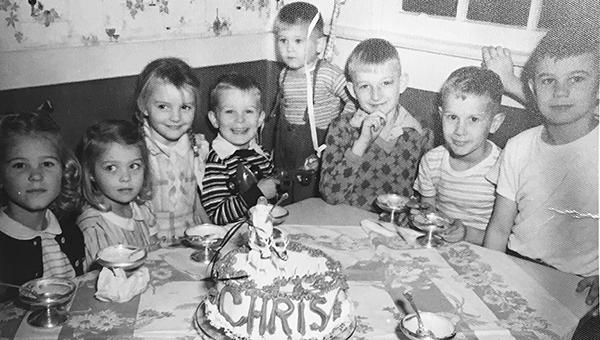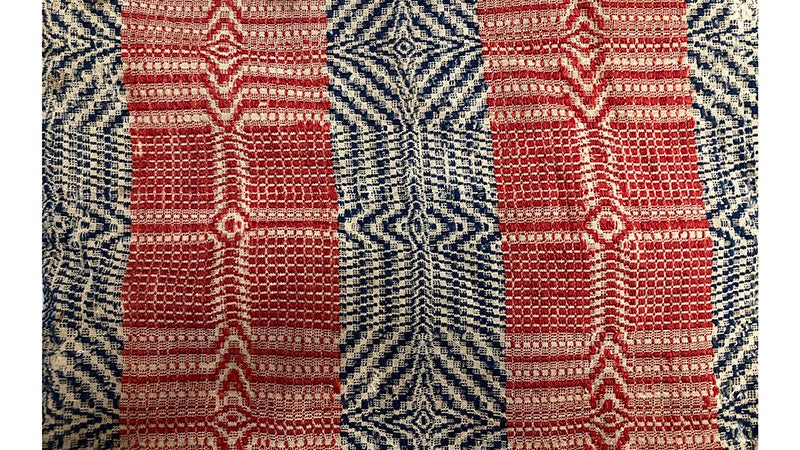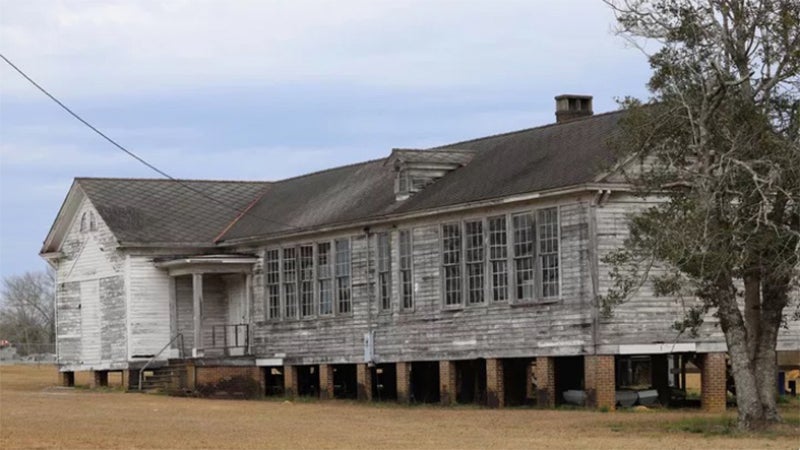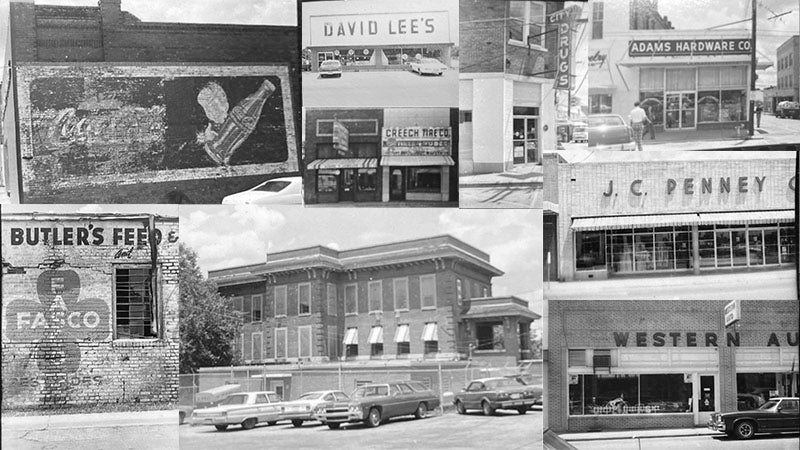Remember when: Growing up in the ‘30s, ‘40s
Published 2:28 am Saturday, August 4, 2018

- The Kids on Church Street - Circa 1948. L-R Sandra Snellgrove, Lulu Waller, Kay “Sisto” Bell, Chris Caton (birthday boy), Bobby Snellgrove, Joe Bell, Jerry Caton, Skip Caton. Courtesy Photo
Hometown people living away from Andalusia sometimes show up with their written memories of life where they grew up here in dear old Andy. Here are a few of those ramblings beginning with the late Jimmy Brown whose father was Luther Brown, Sr. always associated with the schools and postmaster at one time. Jimmy was married to Allyn Hamner, Dr. Hamner’s daughter. The Hamners once lived in Gantt but later moved into town to Andalusia. Julia Hamner Studstill, another daughter, once reminisced about growing up in downtown Gantt. Beatrice Hamner Craven Brackin was another sister who remembered those days when downtown Gantt was a booming lumber town. Jimmy who moved to Pensacola would often talk by phone or letter with Sidney Waits, his childhood friend, about all of their adventures of their growing up days in the 1930s and 40s.
In the early 1930s, their fathers arranged for the purchase of the Andalusia Country Club property from James Austin (Aus) Prestwood and built the golf course (9 holes) where the young boys would swing from vines into the creek at the foot of the old ravine hole. G. S. Waits, Sr. was the first club president and L. E. Brown, Sr. was the second president.
“A good memory jogger,” Jimmy Brown said “was trying to remember all of the cowboys in the movies at the old Fox Theater on East Three Notch Street (which was located in the same block that WAAO operates in today.) We had to take along two sticks, one to hold up the seat and the other to kill rats as big as alley cats scurrying around! We would go at 10:00 a. m. , pay 10 or 15 cents, and see a comic, serial, main feature, and ad of future movies, not twice but sometimes three times. Mrs. “Pinkie” Benson’s house (She later sold that property to Count Darling to build his dealership.) located where the Taylor Parts office is today on Three Notch and Central Street was where we would park our bikes. We sometimes would stay in the picture show until 7:30 at night.”
“Cowboys on the silver screen were Tom Mix, Monte Montana, Kit Carson, Hop-a-long Cassidy, Roy Rodgers, Dale Evans, Gene Autry, Lone Ranger, Gabby Hayes, Johnny Mack Brown, Lash LaRue, and Andy Divine.”
“The telephone company was located near where the museum is today. The Central Operator knew all the news and gossip in town. You rang your telephone and the operator would answer and say ‘Number Please.’ She would say either it was busy or she would ring it and connect you.”
“Dottie, the iceman, delivered ice by horse and wagon to your door. Mr. Baxter and Mrs. Carl Mathison were the school principals. Somehow signs got plastered all over the high school lawn. About that same time, some married woman’s ‘teddies’ were raised on the school flag pole. A strong smelling rotten egg odor came from someone’s locker, and a goat got tied to the front door of the high school. The ones who got caught (for all the pranks) had to do 20 laps around the football field!”
Jimmy Brown continued. – “We started the first grade around 1930 in the little wooden building on College Street behind the East Three Notch Grammar School. We were graduated to the big brick building in the third grade. I need Miss Clyde Simmons to correct my scribbling and correct my English like she did in high school, but I’m sure you get the idea of these little thoughts going back some 76 years.”
Another story was once told to me by Roy Windham who got most of the story from Marvin Walker. Keltys Powell and Charles Brooks were in on this prank. There was a third one, too, but Roy couldn’t recall who he was.
“The Robinson Subdivision west of the school where Walker, Robinson, and Broughton Avenues are now located were undeveloped at the time with only pastures and trees, maybe a house or two. One day as a certain character was crossing the pasture on his way to school, there was a cow grazing there. When school started that morning and the librarian came to the library on the second floor of the high school (Church Street School), there was a cow in the room. Charles Brooks (who went on in his career to be the editorial cartoonist for over 20 years for The Birmingham News) had done a caricature of the cow on the chalkboard.”
“The teacher sternly asked the students who had brought the cow to school and gotten her into the upstairs library. She suspected who had done it. The culprit stated, ‘I was walking to school this morning when I crossed the pasture and saw this piece of rope. I picked it up and when I got to the library, I discovered there was a cow on the other end of the rope!’ I don’t recall what the punishment was, but I’ll bet they had a harder time getting that cow down the stairs than they did going up!”
Former Andalusia resident Edy Bell Taylor who came home to visit Andalusia recently to call on friends and relatives, dropped by to see me, my former Bellwood neighbor. She enjoys reading REMEMBER WHEN and wanted to offer some stories of her own regarding her growing up years on Church Street.
“My family moved from Gantt to Andalusia in about 1937. Our house was one of a row of five or six houses on Tisdale Street. The Church Street School building was empty for that summer. It was being converted to a grammar school since the new high school across town was opening on Third Avenue and Third Street. I spent my first grade at the new Church Street Grammar School. By my second grade year, mother and dad bought a larger home on Church Street nearer town as our family was growing.”
“We had rented a house on Stanley Avenue (near Montgomery Street) by the water tank in the area known back then as ‘Pleasant Hill.’ Across the street (on the corner of Carson Street) were the Burgesses who owned the local newspaper. Their daughter Bobbie who had long pigtails and played the accordion became my great friend. We attended East Three Notch School that year but only temporarily while 228 Church Street was being readied for us. While at East Three Notch School, my little friend Kelly Burke, Jeanette Burke Carroll’s brother (age 7), died, and our entire 2nd grade class went to the funeral. This was before penicillin was introduced.”
“Living at 228 Church Street was a ‘golden’ time! I went to Church Street School for the third and fourth grades, but for some re-districting reason, I attended sixth grade at East Three Notch School where I met the cutest guy, Riley Taylor.”
“Our home was one of about four houses built by the Swift executives from Chicago who owned the packing company that Stella Beasley later bought. (That property eventually became the Alatex property.) The houses were all similar (Sears-Roebuck homes which packages were shipped to Andalusia by train) and are still standing including the Howard Ward house on South Three Notch.”
“We were fortunate in that when we bought 228 Church Street, there was an understanding between my parents and the Gantts that Lee Olive’s mother, Mrs. O. L. Benson, ‘Pinky,’ would be able to continue to live in the garage apartment behind our house. ‘Pinky’ and mother became great friends. I could write a book of ‘Pinky’ stories. She was a wonderful character who could entertain us children endlessly with her stories.”
“Across the street were the Nortons, the Sessions, the Catons, Mrs. Battle, and directly across was Judge and Mrs. (Lillian) Brogden. He was Probate Judge for many years. Many weddings were performed in their big picture window in front of us. On the weekend between 1940 and 1946 (those World War II years), we could count on weddings every weekend. To our delight, we showered newlyweds with cowbells and old shoes tied to tin cans, rice, black-eyed peas, or whatever else we could find in the pantry!”
“Lower Church Street was so beautiful with its palm trees, really a boulevard. I have fond memories of the elegance of the beauty of lower Church Street. Above the railroad was considered uptown.”
“Children walked everywhere – to church, to school, to town, and to the picture show. Maggie Mae Robinson’s home on the corner of Opp Avenue was beautiful with a wrap-around porch. She left it to the town for a youth center when she later built on the farther end of Church Street. The Commercial Bank bought the property, and it is now the Regions Bank. Next door to the bank was the Blocker home and feed store which is now Spicers Cleaners. Then the Church of Christ was next along the street and after that, Mrs. McDavid, the late Jane Waits Barnes’ grandmother, who sat on her porch in the afternoons with her maid and lemonade treating neighborhood children and other visitors. Judy Ward Buck’s grandmother, Shelly Ward’s house, was next on the street. All of those beautiful ladies were always gracious and welcoming.”
I hope Edy’s childhood stories will continue. Maybe some of you readers have stories about your neighborhood in Covington County you want to submit and share when you think back and Remember When.
Sue Bass Wilson, AHS Class of 1965, is a local real estate broker and long-time member of the Covington Historical Society. She can be reached at suebwilson47@gmail.com.





